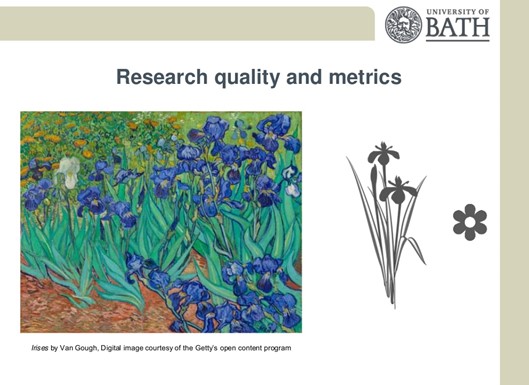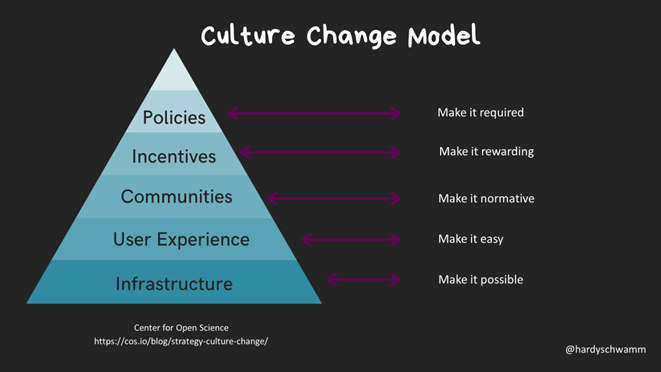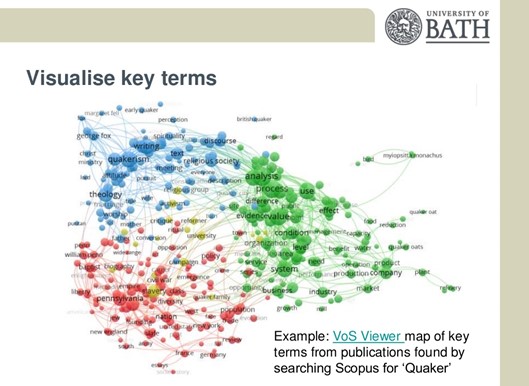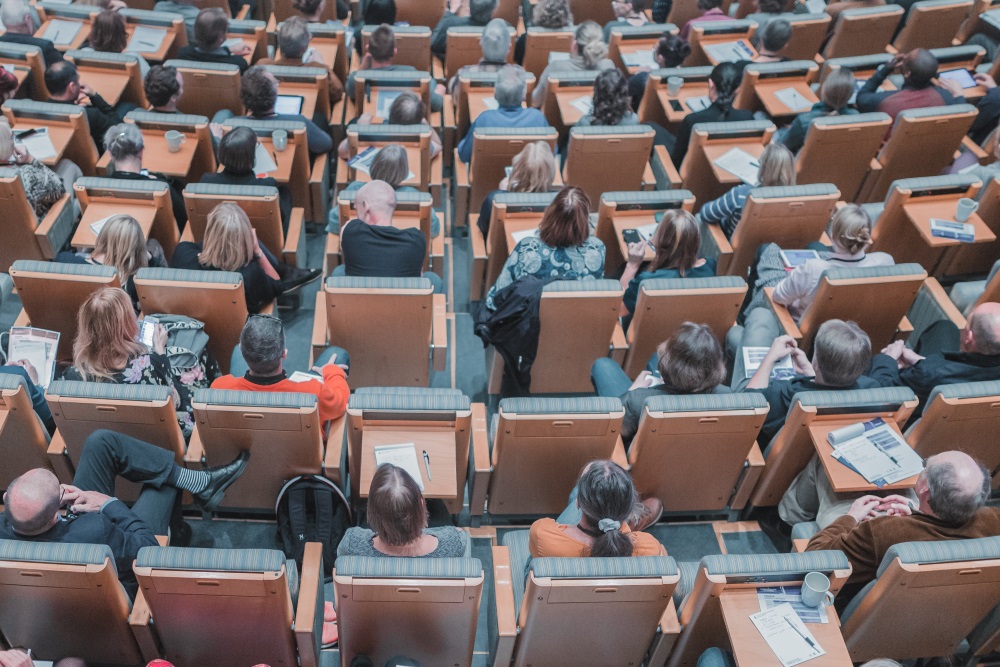In our latest guest post, Pip J. Jones (@Pip_J_Jones) of Bangor University reviews the CONUL Teaching & Learning and Research Groups Seminar that took place in November 2020.
Every Librarian a Teacher; Integrating Scholarly Communication & Info Literacy; Exploring the Potential for Collaboration
Information overload! With a sprinkle of questionable credibility, intrinsic bias, unethical promotion, data falsification, and highly publicised proliferation of mis…dis…information… 2020 smashed through the screens of our home offices with grim home-truths about the utter necessity of unequivocal scholarly communication and critical info literacy skills. Yet, in rapidly focusing our attention, pathways for collaboration within the Information Profession, and innovations in developing curricula for both students and emerging researchers, have arisen.
On Nov 5th, the CONUL Teaching & Learning and Research Groups Seminar on Information Literacy & Scholarly Communication was a feast of practical ideas, thoughtful discussions and collaborative suggestions around the theme of integrating scholarly communication and information literacy. The event was inspired by the exciting recent CILIP Info Literacy Group event ‘Exploring the Intersections of Scholarly Communication & Information Literacy’. Here, I shall give a flavour of the nature of discussions with some key messages and innovative cross-sector suggestions.
Research Evaluation & Info Literacy Skills: two sides to the same coin
Whether we are from a research or teaching background, scholarly communication characterises the flow of information in an HE environment. From collaborative sparking of ideas, to transparent and reproducible protocols, fairly managed data, and dissemination and rebirth in fresh questions or reapplication in teaching; scholarly communication is the conduit for the entire information ‘lifecycle’. When ineffective, it incurs: bias, publishing frictions, unfair and plagiaristic use, and protectionism over sharing attitudes The need for quality scholarly communication training for students and researchers is clear.
In her session, Katie Evans demonstrated that, by thinking of information literacy and research evaluation as two complementary sides of the same coin, we can develop scholarly communication at all stages of academia, and assist in supporting teaching and enhancing research impact.
Katie likened how we characterise our research, including how it is evaluated, as trying to represent art. From a deeply-textured, botanically-detailed yet organically expressive oil painting, to a monochrome, outline cartoon. Citation data struggles to represent the multi-faceted nature of research outputs. Controversial as it should be, information published outside journals and in languages other than English becomes quickly ‘invisible’ ; we only see certain flowers from the bunch. Not everything “is counted”.

Through an Information literacy lens, we can detect cognitive and systemic biases. We can then filter them out. Maybe more crucially, the use of information literacy to demonstrate these issues could catalyse universities to review their own policies about approaches to research assessment and management.
At a systemic, somewhat perverse level, information literacy can expose inequalities in the research environment. In 2020, a notable drop in submissions to academic publishing from women occurred, indicating a potential unequal impact of the COVID pandemic on researcher outputs.
On the flip side of our coin; knowledge of research evaluation, discussion of biases and ‘invisible research’ is fruitful for developing info literacy skills and strong scholarly communication in students (and future researchers). Michelle Dalton asked:
“How can we expect students to be able to evaluate and use research without understanding the publishing processes behind it and the scholarly ecosystem it emanates from?”
Discussion of the research landscape, its current issues, biases and fallacies and how these have driven and motivated past research is crucial in achieving the depth of questioning and critical thinking needed in our students and researchers. Using tools from research evaluation, such as citation network analysis, can help guide students searching intimidatingly large repositories, and deepen knowledge of both the research process and subjects of interest (see ideas below).
Opportunities for building a future culture of access and fair use
An open future for scholarly communication: for learning, sharing and discussing, in which “open practices are embedded in the research and publication cycle, all scientific research will be freely available to people inside and outside academia, research is open by default”.
In his session, Hardy Schwamm lauded this vision and explained how realising a future of open scholarly communication would rely on the combined effects of “technological development and cultural change”.
Hardy cited the Culture Change Model and described the role libraries might play in building communities that make this scholarly cultural change to open output and practice the future norm, echoing themes discussed at the LILAC Conference 2019.

Communities are established by individuals sharing collective values. Embedding scholarly communication into information literacy can nurture the shift in mind-set needed to question the ways in which we value research, envisage how we might evaluate it more holistically and communicate it fairly, efficiently and ethically. Michelle described these aspects as ‘research integrity’, and explained how they might be related to more familiar information literacy concepts of plagiarism, data falsification and fabrication and to wider open science. She highlighted the LIBER Open Science Roadmap (Ayris et al., 2018) as a useful resource.
Katie noted that addressing incentives created by existing research evaluation approaches are also “key to changes we want in scholarly communications and movement towards open scholarship”. Current systems disincentivise open access, less prestigious, innovative publishing channels, despite them potentially having greater societal impact. Intrinsic bias is generated by the attention gained by high impact, sensationalist and selective publishing, resulting in ‘gaps’ and invisibility of replication studies and those with negative or no-effect outcomes. Cultural change will require pressure from the research community against these incentives, and the current monopoly held by ‘prestigious publications’ with their costs to subscribe and publish. The 2020 pandemic bolstered this argument, as inaccessible research and unshared data breeds distrust: outputs that non-specialists can interpret unambiguously and can be disseminated rapidly are vital.
With regard to ‘making it easy’, Samantha Holman’s session tackled barriers to an area many libraries find complex: copyright. Acknowledging the difficulty of navigating detailed legislation, ever-changing technology and curriculum delivery, she describes recent changes clearly and helpfully. She also suggests building into the curriculum responsible usage of publications at an early stage, building a culture of fair usage.
Great practical ideas for teaching!
Scattered throughout the sessions were some fantastic ideas for integrating scholarly communication, information literacy and research and evaluation techniques into training for students and researchers. Highlights included (relevant talk credited):
- Increasing searching precision by using data visualisation tools to map search results. Demonstrating to students keyword links between studies, mapping both useful articles and red herrings, then applying this to refine search queries or attach effective key words (Katie, figure 3)
- Using the citation networks tools (e.g. Topics in SciVal) to identify close clusters of related literature to follow subjects, researchers of interest or identify target journals for publishing (Katie)
- Comparing preprint and peer-reviewed publications, as a means to discuss the scientific review and publishing process (and its limits!), develop critical evaluation skills and identify quality research information (Michelle)
- Reviewing publications and calls from predatory and fraudulent journals, identifying their (low quality) publishing and ‘red flags’ versus the expectations and protocols of reputable publishers (Michelle)
- Questioning the omnipotence of citation frequency as the means of determining research quality. Whilst citations are frequently lauded as a handy shortcut, studies may be highly cited for notoriety or being retracted (Michelle). What else could highlight quality research?
- Utilising a reading list to talk about the different types of copyright (the average reading list has quite a few that apply!) and lead this into wider discussions about fair use and plagiarism (Samantha)
- Exploring research data and its lifecycle through finding and reusing existing data. What is FAIR use? What makes the data easy to reuse and how can it be documented meaningfully, and how can students and researchers apply this to their own data? (Michelle)

Potential for Collaboration
Innovations and insights are often sparked by viewing themes from opposite angles or importing concepts cross-sector to be born again – as evidenced by the practical suggestions above!
There was a strong theme of collaboration throughout the seminar, realising that it is easy to remain within silos of ‘research evaluation’, ‘teaching support’, ‘academic liaison’, ‘copyright’… but that asking for advice and sharing of skills between colleagues in your institution not only increases professional confidence and knowledge but also strengthens our position by consolidating and highlighting provision to the whole institution.
Suggestions for collaboration included:
- delivering training as a team: team-teaching with information literacy specialists delivering sessions for researchers (e.g. searching & publishing strategy), and research evaluation specialists demonstrating the research lifecycle to students
- sharing specific experiences in bias reduction: decolonising scholarly communication; using experience from work done in libraries
- bridging skills gap by sharing skills across/within profession: training each other, or acting as advisors on specialisms
- using resources developed in other sectors to guide your CPD: Katie highlighted the Bibliometric Competencies Model (Cox et al., 2017) as a helpful resource for developing skills in scholarly communication, research evaluation and bibliometrics in HE.
Final Thoughts
Integrating scholarly communication and information literacy is possible through collaboration and skill-sharing, and really sets the stage for fostering a culture and community of open, fair and ethical research and scholarship.
Fusion of colleagues’ complementary perspectives generates innovative teaching ideas and avenues for discussion. Collaborative input from specialists in research evaluation, academic support and liaison and professionals working in copyright and publishing can together influence a culture change towards open, responsible and fair information management, with the HE library being the heart of a community of effective scholarly communication.
Have you found any techniques useful for increasing scholarly communication or info literacy skills in students or researchers?
Have you or could you implement skill or idea sharing between library, academic support and research evaluation staff?
Have you utilised any of the practical suggestions from the seminars?
Seminar credits:
Chair:
Dr Jane Secker, Senior Lecturer, Educational Development at City University, Chair of the CILIP Information Literacy Group & member of UK Copyright Negotiation & Advisory Committee.
Panel & Session speakers:
Katie Evans, Research Analytics Librarian, University of Bath
Samantha Holman, Chief Executive Officer, Irish Copyright Licensing Association
Michelle Dalton, Head of Research Services, University College Dublin
Hardy Schwamm. Open Scholarship Librarian, NUI Galway
References:
Ayris, P., Bernal., I., Cavalli, V., Dorch, B., Frey, J., Hallik, M., Hormia-Poutanen, K., Labastida, I., MacColl, J., Ponsati Obiols, A., Sacchi, S., Scholzem F., Schmidt, B., Smit, A., Sofronijevic, A., Stojanovski, J., Svoboda, M., Tsakonas, G., van Otegem, M., Verheusen, A., Vilks, A., Widmark, W. & Horstmann, W. (2018). LIBER Open Science Roadmap. Zenodo. http://doi.org/10.5281/zenodo.1303002
Cox, A., Gadd, E., Petersohn, S. & Sbaffi, L. (2017). Competencies for Bibliometrics. Journal of Librarianship and Information Science, 51(3), 746-762. http://doi.org/10.1177/0961000617728111
View recordings of the presentations and slides from the event



